 Faded way too long, I'm floatin in and out of consciousness | Picture Quotes
Faded way too long, I'm floatin in and out of consciousness | Picture QuotesWarning: The NCBI website requires JavaScript to operate. In and Out of Consciousness: How Does Conscious Processing (D)evolve Over Time? Jaan Aru1Department of Penal Law, School of Law, University of Tartu, Tartu, Estonia2Chair of Data Science, Institute of Computer Science, University of Tartu, Tartu, EstoniaTalis Bachmann1Department of Penal Law, School of Law, University of Tartu, Tartu, EstoniaThe processing of mental information includes unconscious and conscious modes and there are transitions between these two. The content of the subjective experience may arise from preconscious content, but an opposite process of loss of conscious content or its decay of subjective experience is also an inevitable reality. Both forms of transition on the border between unconscious and conscious processing are omnipresent. But how does this transition develop over time? Although there is enough literature about whether conscious perception is all-o-na or qualified (Sergent and Dehaene, ; Overgaard et al., ), we ask the complementary question: how does conscious perception change and evolve over time? While in phenomenological approaches to the philosophy of the mind, the temporal perspective that encompasses the mind has been recognized as crucial in the understanding of consciousness (e.g. anticipation, present and retention in Husserl, ), in experimental paradigms only narrow temporary slices have been examined. First we will focus on knowledge about transitions obtained from studying brief visual stimuli. According to the microgenetic tradition, mental content does not emerge instantly, in a totally or alone way (revision: Bachmann, ). Conscious content, however, arises as a gradual process of formation where the initial transition (there was no content and now there is some content) grows up to a time-consuming process in which the subjective phenomenal content of the same intentional object matures by systematically acquiring more qualities to the previous version of the perception. This intentional object could be a visual object, scene, memory representation, etc. These attributes or microgeetically developing features include subjective clarity, subjective contrast, subjective fragmentation/exhaustivity, thickness/details, subjective stability, etc. (Bachmann, , ) In other words, the conscious experience of the content related to the same intentional object changes considerably over time (see also Hegdé, ; Breitmeyer, ; Pitts et al., ). On the other hand (especially when presenting typical short objects of most experiments) a certain experience with their phenomenal subjective content sooner or later disappears from consciousness by an analog process, but gradually reversed, The figure illustrates the notion of microgenesis with its formative and deformative stages. Note that this figure is an abstraction based on empirical research described in Bachmann (). However, we hope that the provocative drawing of this time course will inspire researchers to investigate how it looks exactly. The function of conscious experience evolving over time. A) Microgenesis of perception with its formative and deformative stages. The image is based on the revised empirical research in Bachmann (). Note the proposed asymmetric inertia of formation and deformation. (B) It is conceivable that functions over time are different for two types of conscious experience: immediate iconic perception (blue line) and slower memory experience (yellow line; see point 7 below). How is this form influenced by factors from top to bottom such as attention, previous knowledge or working memory? Do these factors lead to faster accumulation and greater clarity of conscious content (green line; see point 6 below)? The units on the Y axis are arbitrary units that will be fixed. This simple conceptualization generates surprisingly many old and new questions. What is the exact shape of this curve? How do changes in stimulus parameters change (e.g. contrast, duration)? Is there a kind of asymmetric inertia of formation and deformation as described in the Figure? In other words, is it so that deformation takes more time than the formation of conscious content? For our mind, the decline of consciousness seems to be slower mainly because the psychophysical estimates of the speed of immediate perception masking, estimation of the temporal order, accelerated discrimination and other experimental tasks are smaller than the experimental estimates of the duration of the immediate memory (Bachmann, ).How to experimentally measure the subjective content (a) in ymax, (b) at any optional stage of microgenesis, 0g.7). In fact, there are many subjective evaluation qualities that develop in response to the stimulation or cue task (e.g., Kalmus and Bachmann, ; Bachmann, , , ). The most recent subjective scales used successfully include the perceptual consciousness scale (PAS) that capitalizes subjective clarity ratings by subjects as well as other methods (review: Timmermans and Cleeremans, ). A corollary question is how subjective and objective measures of consciousness are related. Do they show a similar formation and deformation curve over time? Is there a temporary function analogous to the unconscious processing of content in terms of conscious processing? If so, how do we unravel the conscious and unconscious processes (Miller, ; Bachmann, ; Aru et al., ; De Graaf et al., )? Note that for example Herzog et al. () proposes that conscious and unconscious processing have very different temporal characteristics, which could be useful in unmasking them. How does the attention, previous knowledge, or work memory content influence the shape of this curve (Figure )? For example, we know that all these factors accelerate the entry into consciousness and in general increase the clarity of conscious experience (e.g., Carrasco et al., ; Soto et al., ; Aru et al., ). Therefore, the curve represented in the Figure should rise faster and be higher (in terms of units and). But what about the deformation stage?Do all these factors also change how fast the content of consciousness disappears? What is the typical time course of the formation and deformative microgenetic stages? The research data of the ERP and MEG on neuronal correlations of consciousness suggest that the initial formative stage reaches 150–250 ms (revised in Bachmann, ; Koivisto and Revonsuo, ). However, P300 has also often been found to mark the conscious experience (for example, Sergent et al., ; Del Cul et al., ; Rutiku et al., , ). Intriguingly, there may be two separate processes: perceptual microgenesis (1), where the conscious experience quickly emerges and decays quickly (possibly equal to iconic-memory disintegration) and (2) the immediate microgenesis of memory, where the conscious experience of the same goal forms a bit slower than perceptual microgenesis and falls much later than dilation. It is even possible that while the perceptual microgenetic function decays (deformation) the memory-based function is still accumulating (Figure , yellow vs. blue line). This idea fits the distinction between phenomenal and reflective consciousness, which is believed to depend on different types of attention (e.g., Koivisto et al., ).Now, there appears an intriguing theoretical question: if one and the same stimulus-event is related to perceptual and immediate microgenetic processes with two sets of NCC, should we then consider these different aspects of perceptural For example, Hochstein and Ahissar's "reversal hierarchy" theory suggests that global features should emerge in consciousness faster than local characteristics. This crucial prediction was recently confirmed (Campana et al., ), which led to thinking that conscious perception could begin at the highest levels of visual processing and acquire the fine details through feedback from higher levels to low visual processing. Is the nature and regularities of microgenesis the same when an external stimulus is becoming microgeetically and when an image of memory of the same stimulus is evoked and formed? More generally: are the similar formation and deformation curves for all transitions that occur on the threshold of consciousness? There are many examples of transitions within and outside consciousness. Can one benefit from the knowledge gathered while studying short visual stimuli to understand processes that develop with other types of stimuli? In order to understand this last question, we will list some examples of the transition to consciousness to illustrate the heterogeneity of this type of transformation: recalling an element or idea as questioned by the instruction or external question; remembering an element or idea as ignited by intrinsic associative errors; having a vision; experience of an external sensor stimulus after its prior stimulus treatment; experience of an already present conscious stimulus Is in all these cases evolve There are also many examples for the transition out of consciousness: to vanish the conscious perception; to vanish the iconic memory; to lose the content of thought or image; to lose the content of the explicitly experienced MMM; to lose the conscious awareness of a stimulus after refocusing the attention in other places; to lose a certain aspect (feature, attribute, quality) of conscious perception of contrasting biceptual demise. Gathering such a list leads once again to interesting questions. For example, what transitions are reversible and which are not? The loss of Gestalt content formed back to a senseless range of elements seems difficult; the restoration of blindness/changes seems impossible; after hearing the words within the sine wave discourse it is impossible to hear noise again. What could this small set of nonreversibility say about the neuronal mechanisms of consciousness? The list of these phenomena seems to suggest that the conscious experience is strongly influenced by previous knowledge, since it establishes a insightful knowledge about a particular stimulus, it is difficult or even impossible to eliminate it. More importantly, the variety of examples leads to the question of whether there are general mechanisms and regularities that underlie all of these phenomena. Do all these other types of transitions share some of the key features with transitions that occur in visual perception (Figure )? In visual perception, it is relatively simple to "close" perception with techniques such as visual masking (Bachmann, ; Bachmann and Francis, ), but even after studying the time course of visual perception is a time that consumes and a difficult effort (Bachmann, ). Is it possible or even significant to try to do so with other types of transitions? How would it proceed with the recovery of "slicing up" memory, Gestalt perception or the formation of perception? We do not have definitive experimental approaches, but we believe that these questions are important to raise and explore. The present manuscript had some objectives: (1) we wanted to emphasize that the conscious content evolves and changes over time, (2) we note that the exact course of the time of how the conscious content evolves over time is unknown and tentatively drew a time course to provoke further research in this direction, (3) we wanted to demonstrate that thinking about the course of the time of conscious processing causes many interesting and intriguing questions, (4) finally we did how microgenetic regularities are general—all On the way it also seems to have encountered some new concepts applicable to the study of dynamics of conscious experience: the formation/disformation (a) symmetry, reversibility and the possibility of having two different NCCs for the same perceived object. We hope that some of these ideas and concepts will be beneficial to unravel the neuronal mechanisms of consciousness. Author's contributions TB conceived the initial ideas, JA extended them, both JA and TB discussed the ideas and contributed to writing the manuscriptConflict of declaration of interest The authors state that the investigation was conducted in the absence of commercial or financial relations that could be interpreted as a potential conflict of interest. Acknowledgements This work is supported by the institutional scholarship IUT20-40 of the Estonian Ministry of Education and Research. ReferencesFormats: Share , 8600 Rockville Pike, Bethesda MD, 20894 USA
Decrease in consciousness What is the decrease in consciousness? The main characteristics of consciousness are alertness and guidance to place and time. Alert means that you are able to respond appropriately to the people and things around you. Being oriented to the place and at the time means you know who you are, where you are, where you live and what time it is. When consciousness is diminished, its ability to remain awake, conscious and oriented is deteriorated. The affected consciousness can be a medical emergency. The brain is ultimately responsible for keeping consciousness. Your brain requires certain amounts of oxygen and to function properly. Many substances you consume can affect your brain chemistry. These substances can help maintain or decrease consciousness. For example, it is a stimulant, which means it raises its levels of brain activity. Caffeine can be found in many foods and drinks that you consume every day, such as coffee, soda and chocolate. On the other hand, it makes you drowsy. This side effect is a deteriorated form of consciousness. Diseases that damage brain cells can also cause poor awareness. A is the most severe level of impairment of consciousness. Symptoms that may be associated with decreased consciousness include: Levels of consciousness with deficiencies include: ConfusionThe confusion is marked by the absence of clear thinking and may result in a poor decision-making. Disorientation Disorientation is the inability to understand how it relates to people, places, objects and time. The first stage of disorientation is usually around the awareness of your current environment (for example, why you are in the hospital). The next stage is being disoriented over time (years, months, days). This is followed by disorientation with respect to the place, which means you may not know where it is. follow the disorientation with respect to the place. The most extreme form of disorientation is when you lose the memory of who you are. Delirium If you are delusional, your thoughts are confused and illogical. People who are delusional are often disoriented. Their emotional responses range from fear to . People who are delusional are often very much too. LethargyLethargy is a state of diminishing consciousness that resembles. If you are lethargic, you may not respond to stimulants such as the sound of an alarm clock or the presence of fire. StuporStupor is a deeper level of impaired consciousness in which it is very difficult for you to respond to any stimulus except for pain. ComaComa is the deepest level of the affected consciousness. If you're in a coma, you can't respond to any stimulus, not even pain. Common causes of decreased consciousness include: Other underlying causes of decreased consciousness include: Diagnosis and treatment of decreased consciousness begins with a complete medical history and , which includes a detailed evaluation. Your doctor will want to know about any medical problems you have, such as, , or . They will ask about any medication you are taking, like or . They will also ask if you have a history of illegal drug abuse, prescription drugs or . In addition to your full and physical history, your doctor may order the following tests: Treatment for decreased consciousness depends on what is causing you. You may need to change medications, start a new treatment or simply treat symptoms to address the underlying cause. For example, you need emergency medical treatment and possibly surgery to treat brain bleeding. On the other hand, there is no cure for Alzheimer's. In this case, your health care team will work with you to develop strategies to treat symptoms and maintain the quality of your life for as long as possible. Talk to your doctor as soon as you think you may be experiencing a decrease in consciousness. You can start your treatment as soon as possible. The reduced consciousness can be a sign of a serious condition. Getting quick medical care is important for your long-term perspective. Your perspective can get worse the longer you spend in less full consciousness. Last medical review on 28 November 2017Read this following

Scientists identify brain signals of fading consciousness during anesthesia, sleep - UPI.com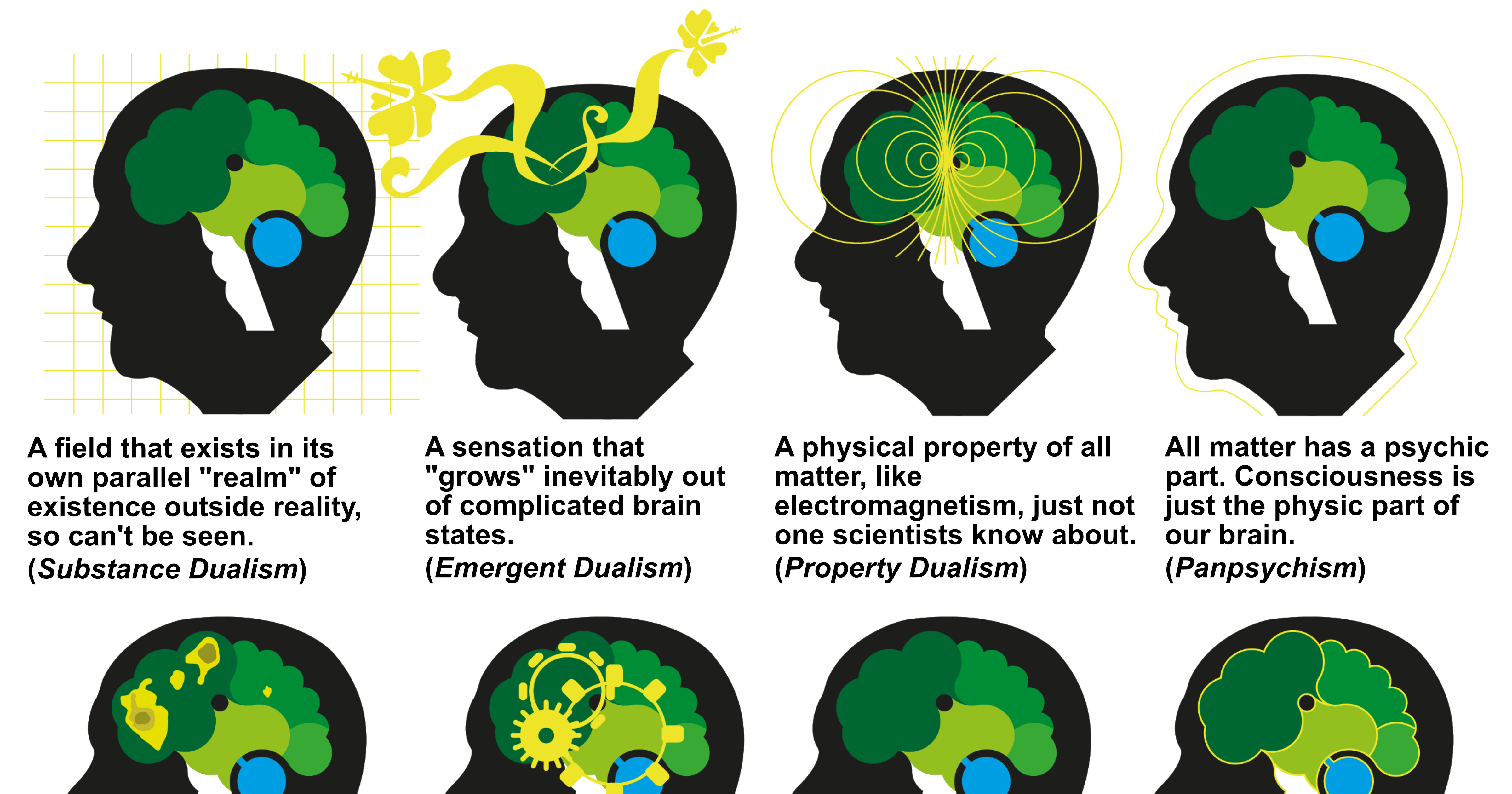
David Chalmers on the nature and ethics of consciousness - 80,000 Hours
How does consciousness fade away when one is dying? - Quora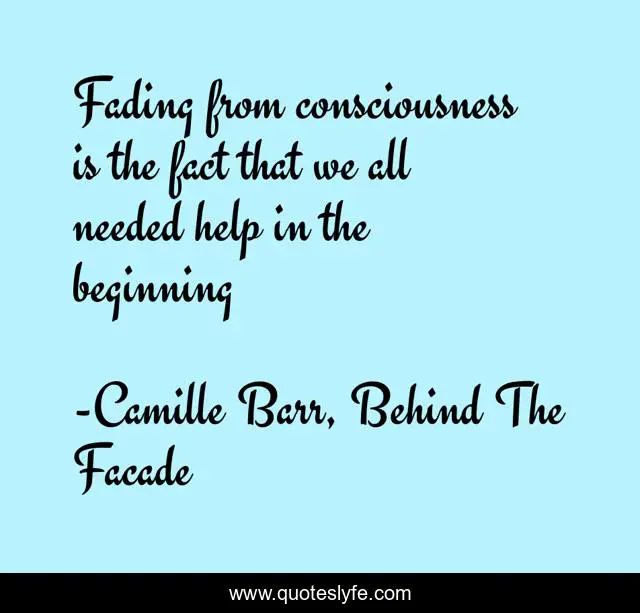
Fading from consciousness is the fact that we all needed help in the b... Quote by Camille Barr, Behind The Facade - QuotesLyfe
Does Consciousness Pervade the Universe? - Scientific American
Drake Quotes: Faded way too long, I'm floatin in and out of consciousness ...![SA on Twitter:]()
SA on Twitter: "The way this scene in In This Corner of the World was so sudden and we couldn't see everything that was going on, like we were fading in and![SA on Twitter:]()
SA on Twitter: "The way this scene in In This Corner of the World was so sudden and we couldn't see everything that was going on, like we were fading in and
Prescription Drug Basics | Safe Party![SA on Twitter:]()
SA on Twitter: "The way this scene in In This Corner of the World was so sudden and we couldn't see everything that was going on, like we were fading in and
The Fading of the Light | John's Consciousness
Fading qualia and dancing qualia
Tides of Consciousness Fading by Jason Robinson on Amazon Music - Amazon.com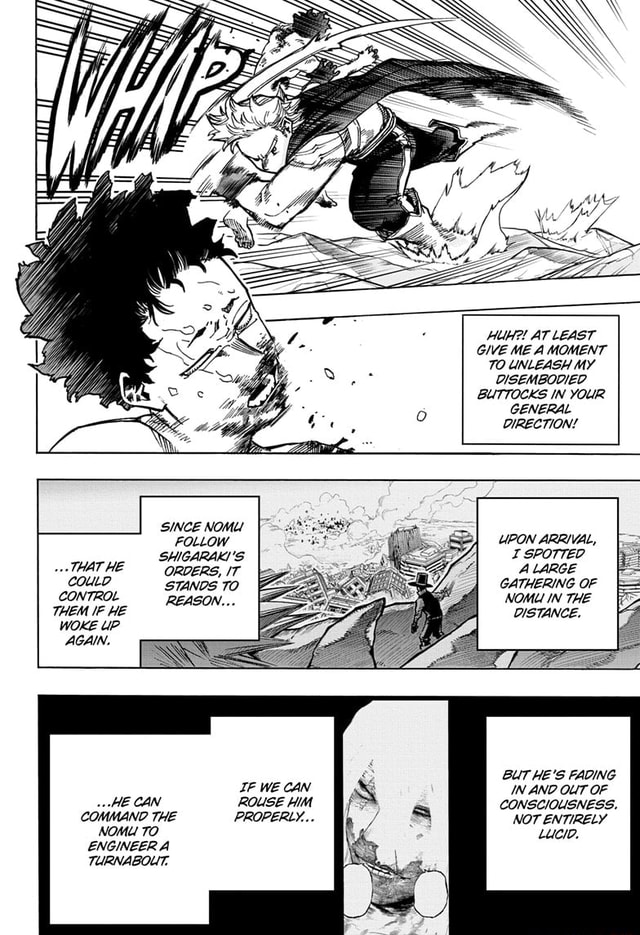
AT LEAST GIVE ME A MOMENT UNLEASH MY DISEMBODIED BUTTOCKS IN YOUR GENERAL DIRECTION! SINCE NOML - FOLLOW UPON ARRIVAL, SHIGARAKI'S g SPOTTED THAT HE ORDERS, STANDS IT TO A LARGE GATHERING
The Last Breath ov Fading Consciousness (split w/ Omnivoid) | Lacrima Mortis
Blending in is fading out ❣️ | Fade out, Black consciousness, Beauty
On Fading to Black: The Hows, The Whens, and The Whys![Rediscovering Consciousness in People Diagnosed as]()
Rediscovering Consciousness in People Diagnosed as "Vegetative" | Discover Magazine
The brain's 'on-off switch' for human consciousness is even more intriguing than we thought - ExtremeTech
Rare photo of Hughes after the xf-11 crash. Though fading in and out of consciousness, he forbid the doctors at the hospital t… | Hughes, Howard hughes, Rare photos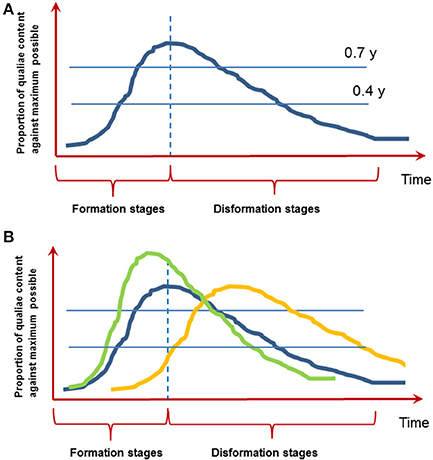
Frontiers | In and Out of Consciousness: How Does Conscious Processing (D)evolve Over Time? | Psychology
Fading Light and Sluggish Flight: A Two-Dimensional Model of Consciousness in Lucid Dreams and Out-of-Body Experiences Presentation at the Annual Conference. - ppt download
Fading Consciousness by SCHLEEP on Amazon Music - Amazon.com
Notes from ASSC pt2: Anesthesia, consciousness and the brain | Daniel Bor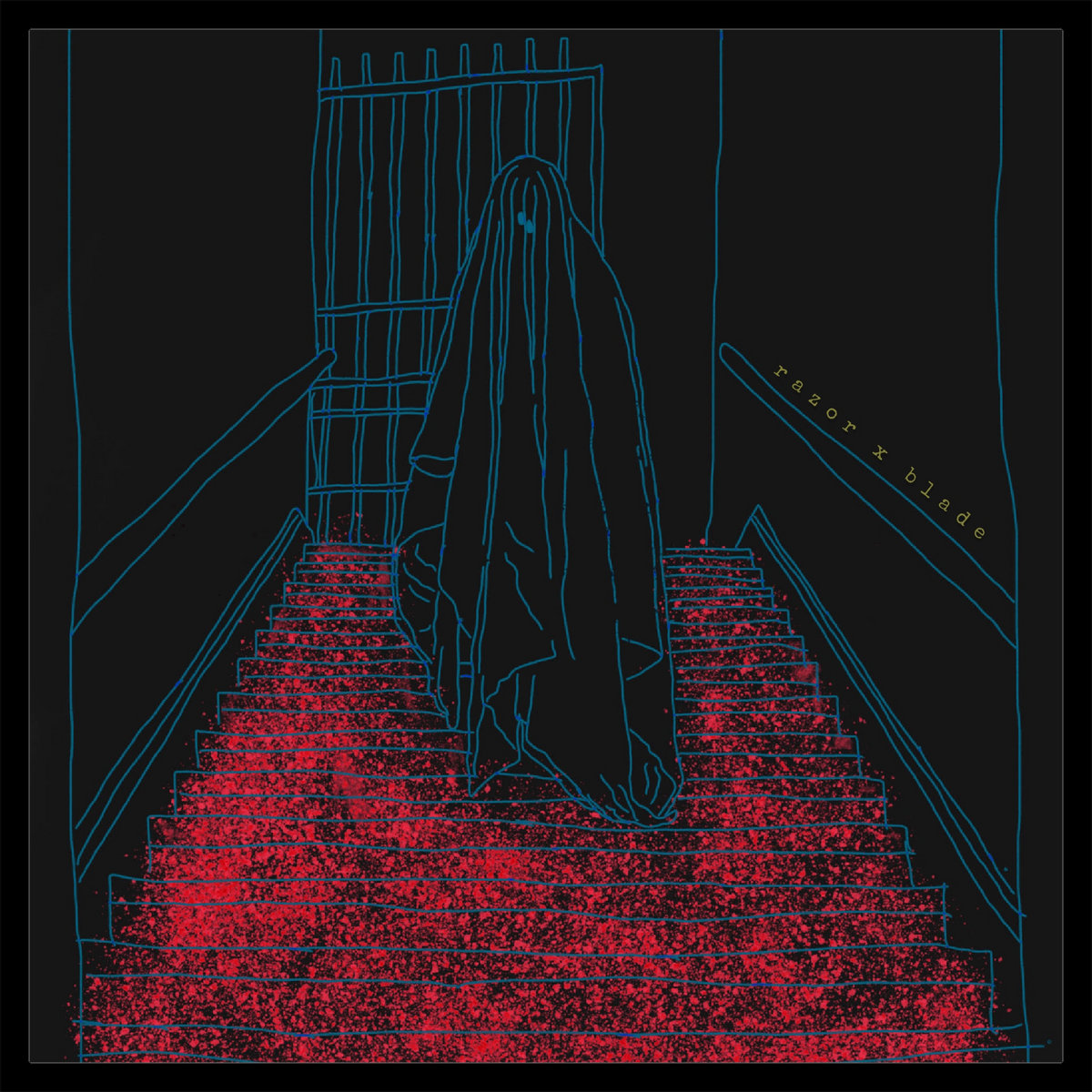
At the Edge of Fading Consciousness | Mikau | p.s.you'redead
Neuroscience Readies for a Showdown Over Consciousness Ideas | Quanta Magazine
Neuroscience's New Consciousness Theory Is Spiritual | Psychology Today
Consciousness
Fading Consciousness by Kaleidosaurus on DeviantArt
Lacrima Mortis - The Last Breath ov Fading Consciousness (split w/ Omnivoid) - teaser - YouTube
The partial brain thought experiment: partial consciousness and its implications
The fade-out in pop music: Why don't modern pop songs end by slowly reducing in volume?
A Phantom Mermaid is Here? Within Fading Consciousness - One Piece S04E100 | TVmaze
The Last Breath ov Fading Consciousness - A Omnivoid & Lacrima Mortis Split - YouTube
ericalamango Instagram profile with posts and stories - Picuki.com
Network Properties in Transitions of Consciousness during Propofol-induced Sedation | Scientific Reports
Indonesia Watches as an Ailing Suharto Clings to Life - The New York Times
Stimuli fading away en route to consciousness | EurekAlert! Science News





























Posting Komentar untuk "fading in and out of consciousness"